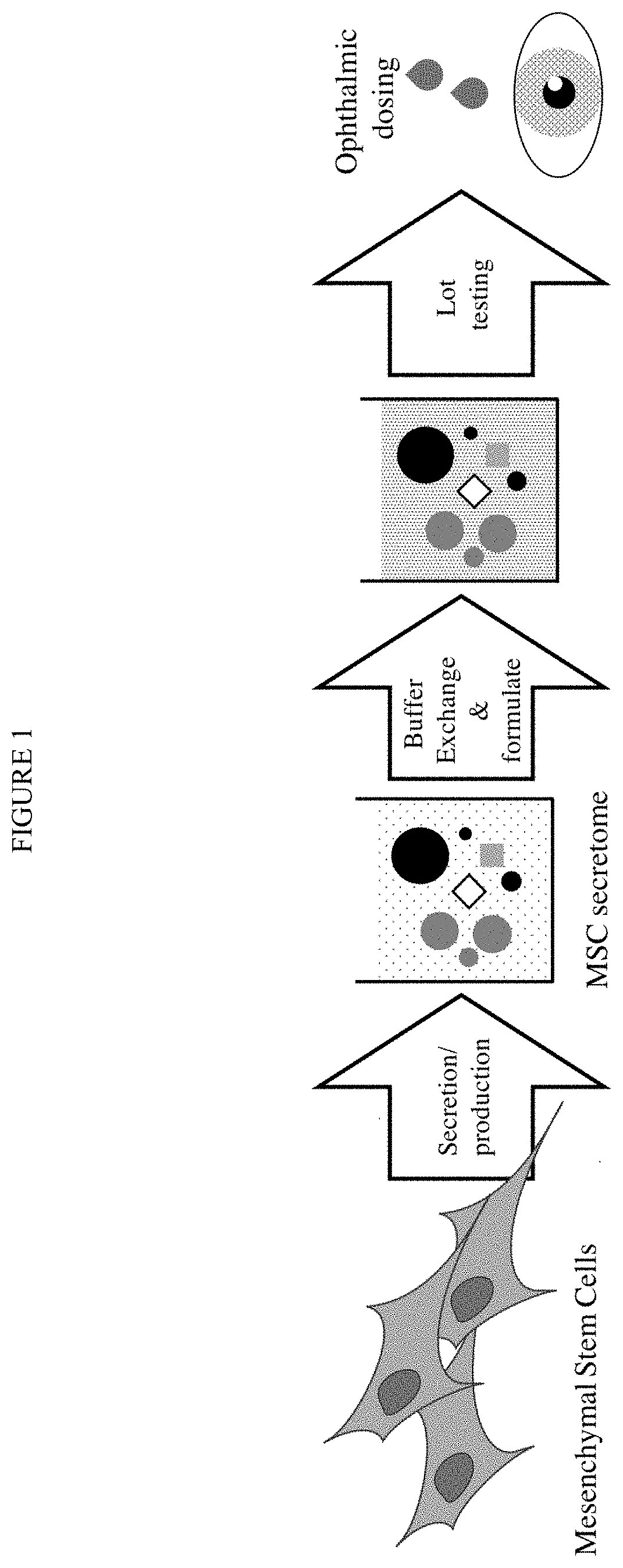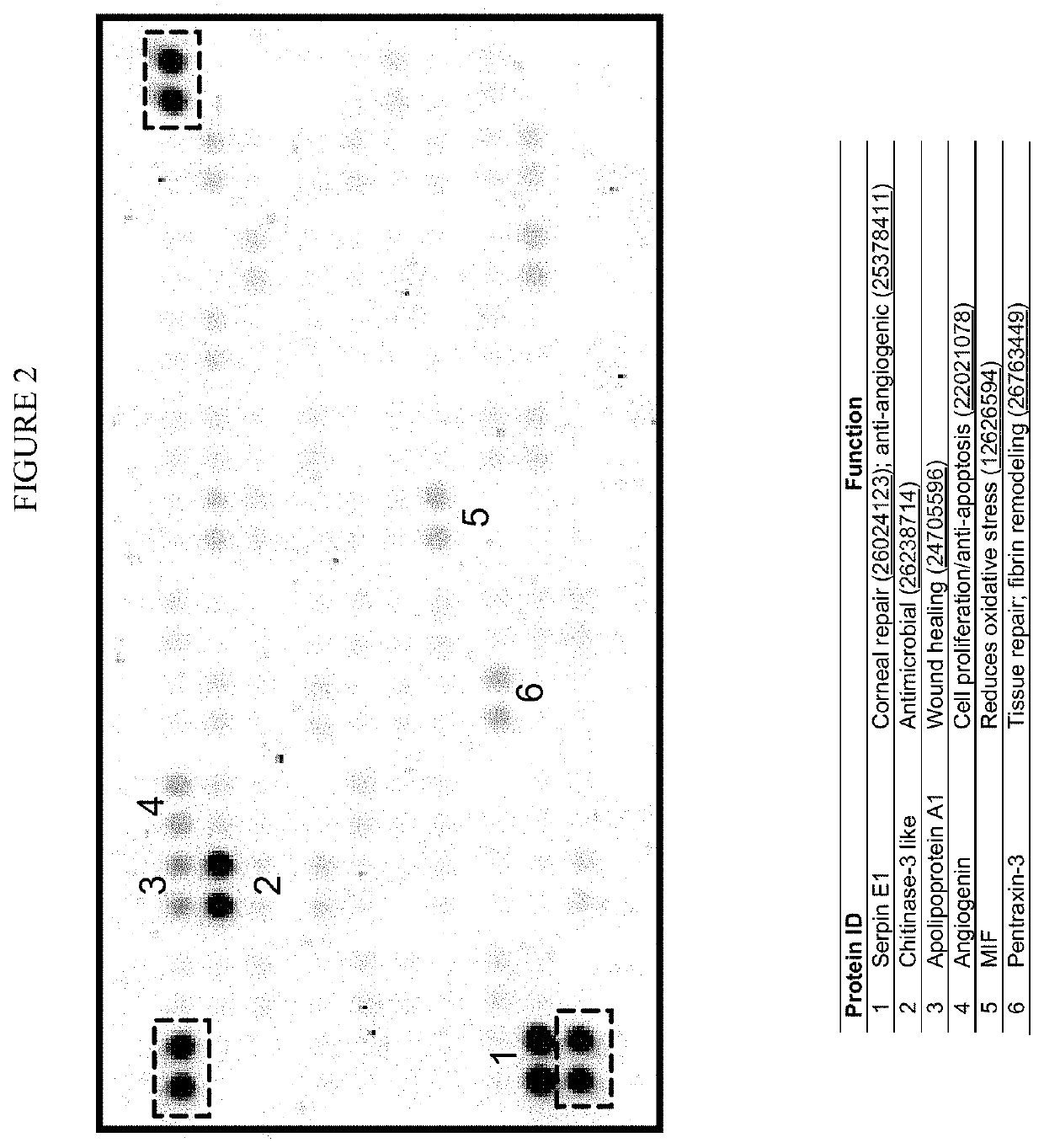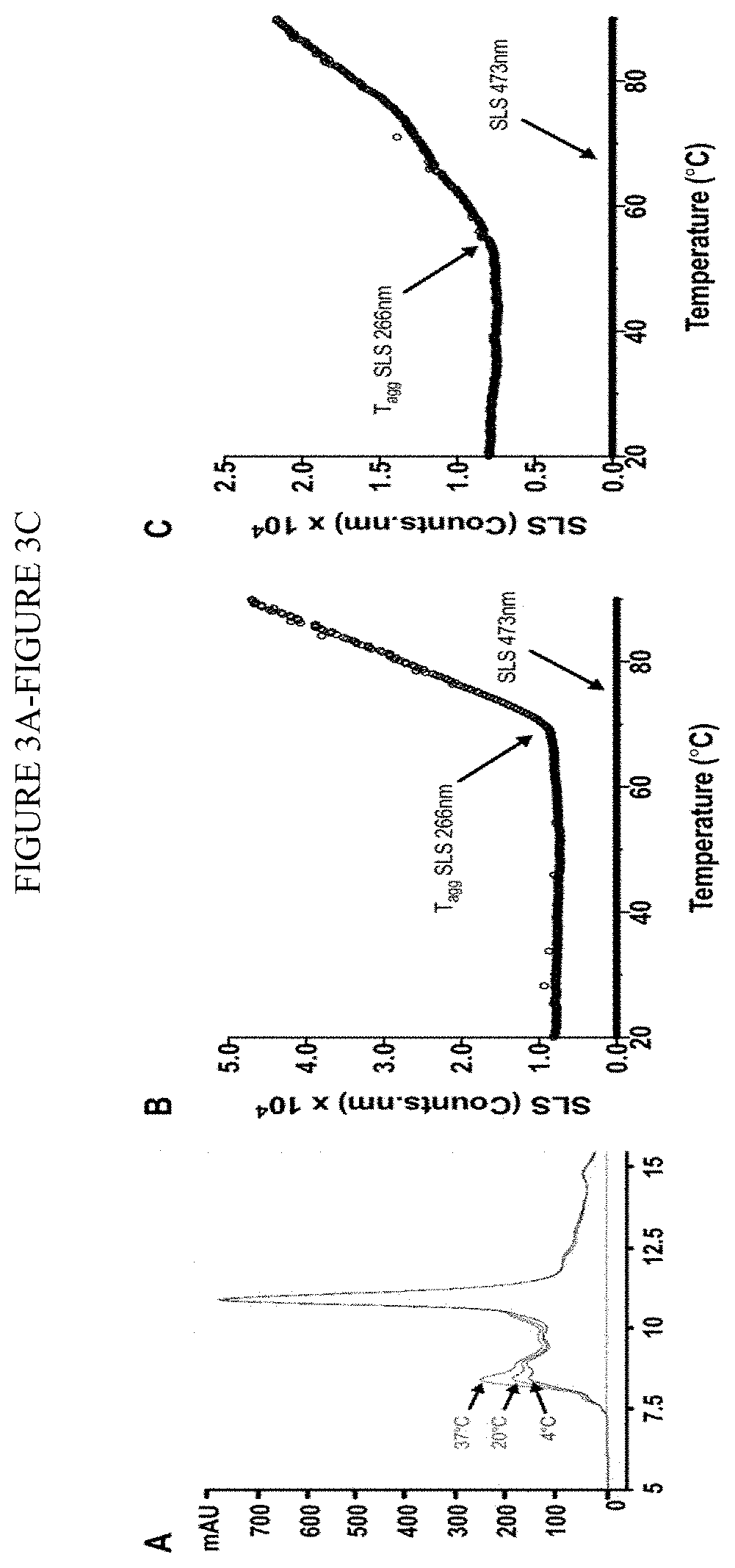Processes for making and using a mesenchymal stem cell derived secretome
a technology of mesenchymal stem cells and secretomes, which is applied in the field of making and using mesenchymal stem cell secretomes, can solve the problems of difficult to assess potency and/or control “dosing”, difficult to produce and store live stem cell-based therapies on a clinically relevant scale, and implanted stem cells are also susceptible to host immune system attacks. , to achieve the effect of reducing and/or inhibiting neovascularization, promoting
- Summary
- Abstract
- Description
- Claims
- Application Information
AI Technical Summary
Benefits of technology
Problems solved by technology
Method used
Image
Examples
example 1
Secretome Characterization
[0422]The biochemical composition of the MSC secretome can be analyzed for the presence of various factors and activities, including:[0423]IDO (Indoleamine-2,3-dioxygenase) enzyme activity assay;[0424]threshold ppm levels for several trophic factors / cytokines including, but not limited to: HGF, FGF-7, TIMP-1, TIMP-2 Thrombospondin, PAI-1 (Serpin E1), VEGF-A, b-NGF; evaluated by ELISA or luminex; and[0425]additional factors: sFLT-1, PEDF (Serpin F1), IGFBP-2, IGFBP-3, SDF-1, TSG-14, Kallikrein 3, MCP-1, bFGF (FGF2), Angiogenin, MCP-2, Angio-2, IL-6, IL-17, G-CSF, M-CSF, GM-CSF, IL-8, TNF-beta, PDGF.
[0426]The biochemical composition of the MSC secretome can be analyzed based on ranges of factors of from about 10-150,000 pg / 105 cells / per day.
[0427]Particle counts to quantitate the EVs (extracellular vesicles) in the secretome will also be performed
[0428]Lipid content can be evaluated as needed.
[0429]Biophysical Characterization / Release ...
example 2
Biopotency and Biophysical Characterization of a Secretome
[0432]The present example describes methods for determining the secretome identity, as well as composition analyses, biochemical and biophysical characterization, and cell-based assays for use in secretome characterization.
[0433]The analytical techniques described in this example can be used to evaluate performance and stability of different formulations. The formulation with the best stability and tolerance profile will undergo dose-response and dosing regimen evaluation using the alkaline rodent burn injury model. Time to wound healing and histopathology at the wound site, as well as local toxicity can be evaluated.
Potency Assays:
[0434]In order to determine the properties of the conditioned media, various potency assays can be performed, including the following:
[0435]A transwell migration assay corneal epithelial cells (or other cell surrogate once validation)—(e.g., wound closure) can be performed. This assay will provide ...
example 3
MSC Secretome Characterization and Properties
[0473]MSC-S is comprised of key factors associated with wound healing. Prominent factors associated with wound healing and repair make up MSC-S. Biochemical characterization of MSC-S has been performed using a human growth factor / cytokine array containing 105 different proteins (FIG. 2) and most of the highly represented proteins are involved in promoting wound healing or modulating important processes for tissues repair (e.g., reducing oxidative stress).
[0474]MSC-S exhibits a low propensity for aggregation. MSC-S was analyzed to evaluate stability and aggregation propensity. In this study, MSC-S was prepared in phosphate buffers at pH 6.4 and 7.4. MSC-S was first characterized by size exclusion chromatography (SEC) by storage of the MSC-S at 4° C., room temperature (20° C.), and 37° C. for 7 days and then re-evaluated those sample by SEC. Only a slight increase in one SEC peak (RT 8.5 min) that correlates with increasing temperature and ...
PUM
| Property | Measurement | Unit |
|---|---|---|
| storage temperature | aaaaa | aaaaa |
| storage temperature | aaaaa | aaaaa |
| storage temperature | aaaaa | aaaaa |
Abstract
Description
Claims
Application Information
 Login to View More
Login to View More - R&D
- Intellectual Property
- Life Sciences
- Materials
- Tech Scout
- Unparalleled Data Quality
- Higher Quality Content
- 60% Fewer Hallucinations
Browse by: Latest US Patents, China's latest patents, Technical Efficacy Thesaurus, Application Domain, Technology Topic, Popular Technical Reports.
© 2025 PatSnap. All rights reserved.Legal|Privacy policy|Modern Slavery Act Transparency Statement|Sitemap|About US| Contact US: help@patsnap.com



